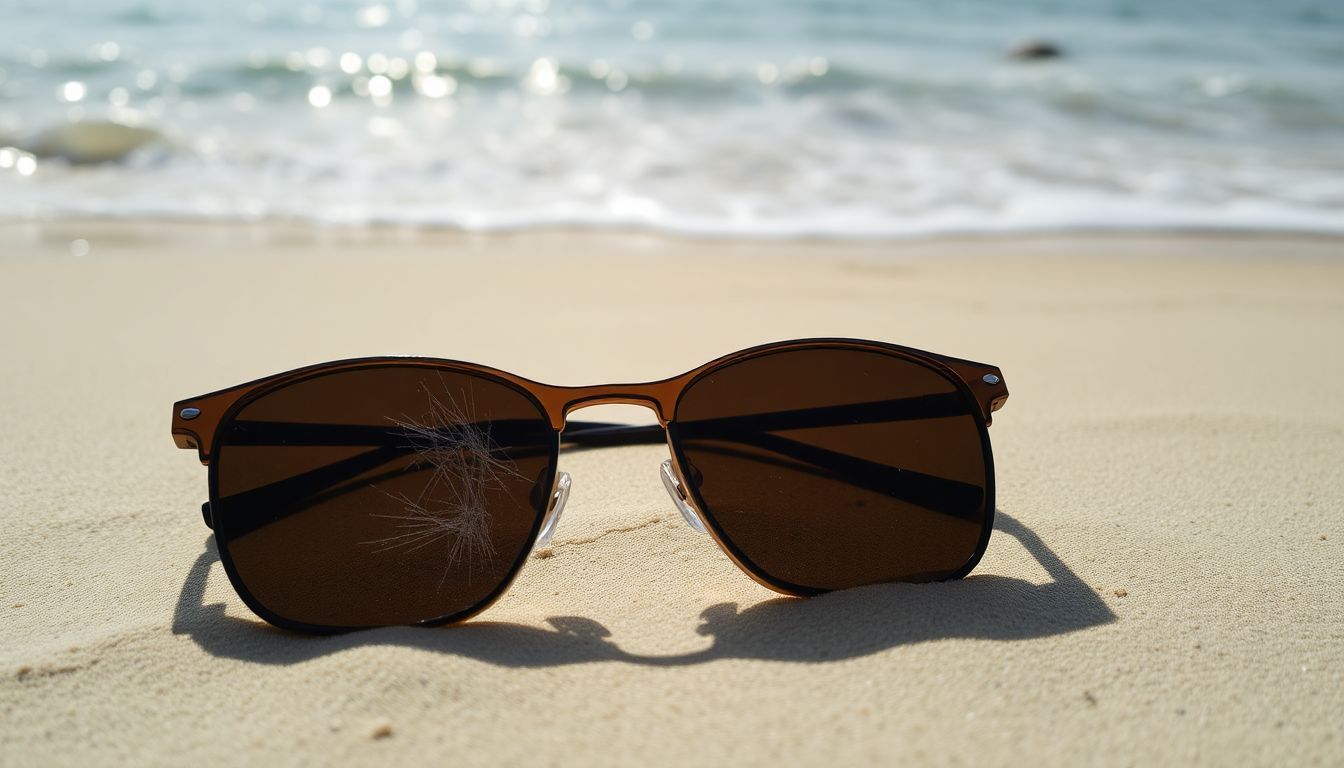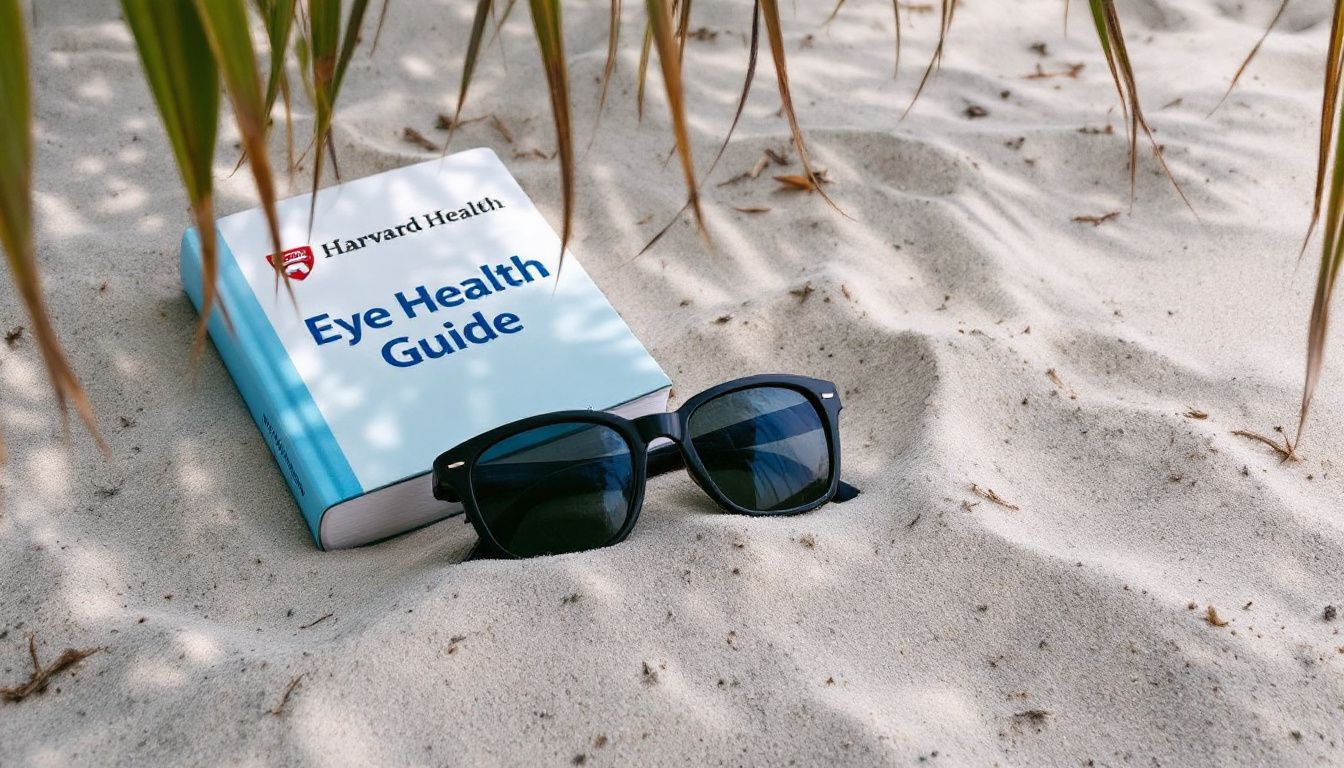Do your eyes feel tired or strained after a sunny day? Ultraviolet (UV) light exposure can harm your eyes over time, causing issues like cataracts and macular degeneration. This guide shares tips on how sunglasses can protect your vision now and later in life.
Thank you for reading this post, don't forget to subscribe!Keep reading to learn why starting early matters!
Key Takeaways
- Sunglasses with 100% UVA and UVB protection prevent long-term damage like cataracts, macular degeneration, and skin cancer around the eyes.
- Children’s eyes are more vulnerable to UV rays because their lenses absorb more sunlight. Start using sunglasses early to build healthy habits.
- UV rays harm even on cloudy days as up to 80% of radiation reaches the ground. Wearing sunglasses daily shields your vision from invisible dangers.
- High-quality sunglasses reduce glare, improve visibility, and protect against aging effects caused by ultraviolet light from reflective surfaces like snow or water.
- Regular eye check-ups help spot problems early and ensure you get proper vision care, including prescription or polarized glasses for extra protection.
Importance of Wearing Sunglasses for Eye Health
Protecting your eyes from UV radiation matters every single day. Sunglasses shield you from harmful rays that can cause long-term vision problems.
Preventive Aspect of Wearing Sunglasses Early in Life
Wearing sunglasses early helps prevent long-term damage to the eyes. UV radiation from the sun can harm the lens, cornea, and retina even at a young age. Over time, this exposure increases the risk of conditions like cataracts, macular degeneration, and vision loss.
Sunglasses with 100% UVA and UVB protection shield against these risks before they become severe.
Children’s eyes are especially vulnerable as their lenses let in more UV light than adults’. Starting eye protection young creates healthy habits for life. A high-quality pair reduces glare while enhancing overall visibility outdoors.
As experts often say:.
UV damage is cumulative—start protecting your vision today.
Effects of UV Exposure on Eye Conditions
UV radiation harms your eyes over time. Prolonged exposure to UV rays can lead to cataracts, a clouding of the eye’s lens that blurs vision. It can also cause macular degeneration, which damages the retina and leads to loss of central vision.
Both conditions are serious and may result in partial or complete blindness if untreated. The skin around your eyes is thin and delicate, increasing its risk for skin cancer caused by ultraviolet rays.
Everyday activities worsen this damage without proper protection. UVA and UVB radiation from sunlight penetrate clouds, water, and reflective surfaces like sand or snow—even on cloudy days.
These harmful rays speed up aging in tissues within the eye. Sunglasses blocking 100% of UVA and UVB light act as shields against these effects while protecting your long-term vision health from further harm caused by ultraviolet (UV) light.
Risk of Developing Skin Cancer Around the Eyes
The skin around your eyes is thin and delicate. UV exposure can damage it easily, increasing the risk of skin cancer. Basal cell carcinoma, a common type, often occurs on eyelids due to sun exposure.
Protecting this area is crucial.
“Sunglasses that block 100% of UVA and UVB rays reduce this risk,” Patricia explains. Always seek sunglasses offering full protection for both comfort and safety under the sun.
Sunglasses Blocking 100% of UVA and UVB Rays
High-quality sunglasses should block 100% of UVA and UVB rays. These harmful ultraviolet (UV) rays can damage the lens of the eye, increasing the risk of cataracts and age-related macular degeneration over time.
Prolonged exposure may also harm the optic nerve or lead to loss of vision.
Choosing lenses with full UV protection helps shield your eyes from these invisible dangers. Ultraviolet radiation penetrates even on cloudy days, making reliable sunglasses crucial year-round.
Pairing them with features like polarized lenses further enhances visibility while reducing strain caused by glare.

Features of High-Quality Sunglasses
Good sunglasses do more than just block sunlight—they protect your eyes from harmful UV rays. They also improve how well you see by reducing glare and enhancing clarity.
Reduction of Glare and Enhanced Visibility
High-quality sunglasses reduce glare by filtering out intense reflected light. Polarized lenses are a top choice for this purpose. They make outdoor activities like driving or fishing safer and more comfortable.
Glare from reflective surfaces, such as water or metal, can strain your eyes and blur vision. Cutting down on glare enhances the visual field and reduces eye strain.
Clear visibility is another benefit of good sunglasses. They improve contrast and color perception by blocking harmful ultraviolet (UV) radiation in the visible spectrum. This feature keeps things sharp while protecting against long-term damage to your optic nerve and eyestrain from bright conditions.
Recommendation for Polarized Lenses
Polarized lenses reduce glare from reflective surfaces like water, car hoods, and snow. They enhance visibility during outdoor activities such as driving or boating. Colors appear sharper, and your field of vision feels clearer.
These lenses filter harmful light while easing eye strain.
For optimal protection, choose sunglasses with 100% UVA and UVB blocking combined with polarized glasses. This combination safeguards against harmful ultraviolet rays while improving overall visual comfort.
Coverage from Multiple Angles for UV Protection
Good sunglasses shield your eyes from every direction. They protect against UV rays sneaking in from the sides, top, or bottom. Wraparound styles work well for this. These designs block harmful ultraviolet light completely.
Choose models with large lenses or wide frames for extra coverage. This prevents exposure to UVA radiation and UVB rays that harm eye health over time. Proper design ensures full protection, especially on sunny or bright reflective surfaces like water or snow.
Importance of Regular Use of Sunglasses
Wearing sunglasses daily helps shield your eyes from harmful UV rays. Even on cloudy days, UV light can still harm your vision over time.
UV Penetration on Cloudy Days
UV rays can pass through clouds. Even on overcast days, up to 80% of UV radiation reaches the ground. This means your eyes are still at risk without proper protection.
High-quality sunglasses block harmful UVA and UVB rays. They shield your eyes from damage and reduce risks like cataracts or macular degeneration. Protecting your vision every day sets a strong habit for better eye health—no matter the weather.
Making Wearing Sunglasses a Habitual Practice
Cloudy days often fool people into thinking eye protection isn’t needed. Harmful UV rays still reach your eyes, even when clouds cover the sun. Wearing sunglasses daily helps shield your vision from damage caused by invisible rays.
Start small to make it a habit. Keep sunglasses in places you frequent—your car, bag, or near the door. Choose polarized sunglasses that block 100% of UVA and UVB rays for better protection and comfort.
Protecting your eyes now can reduce risks like cataracts or macular degeneration later in life.
Protection for Children’s Eyes
Kids’ eyes are more sensitive to UV rays than adults’. Start early—help them wear sunglasses outdoors to shield their vision.
Vulnerability of Children’s Eyes to UV Damage
Children’s eyes absorb more UV rays than adults. Their lenses are clearer, letting in harmful light that can damage the optic nerve and retina over time. Excessive exposure increases risks for eye conditions like macular degeneration or cataracts later in life.
The ozone layer’s depletion worsens this issue, allowing stronger UV radiation to reach Earth. Reflection from surfaces like water or snow intensifies the risk further. Parents can protect young eyes by ensuring their children wear sunglasses with 100% UVA and UVB protection.
Encouragement for Parents to Ensure Children Wear Sunglasses
Kids’ eyes absorb more UV rays than adults’. Without protection, they face higher risks of long-term damage. Wearing sunglasses early shields their vision from harmful UVA and UVB rays.
This habit can prevent serious issues like macular degeneration or cataracts later in life.
Choose sunglasses that block 100% of UV light. Wraparound styles offer extra coverage against sunlight from the sides. Parents play a key role by setting an example and making eye protection fun with colorful designs or favorite characters.
Make it a daily routine—even on cloudy days!
Regular Eye Check-Ups and Discussions with Eye Care Professionals
Eye exams catch problems early. They help spot issues like open-angle glaucoma, diabetic retinopathy, and age-related macular degeneration before they worsen. Regular eye check-ups can also gauge intraocular pressure and detect warning signs of optic nerve damage.
Talk to an eye care professional about your vision protection needs. Ask about prescription sunglasses or blue light blocking glasses if needed. Discuss harmful UV rays and find ways to protect against them, such as polarized lenses or corrective glasses with UVA/UVB blocking.
These steps ensure healthier eyes for years to come… leading to better care for children’s eyes next!
Conclusion
Protecting your eyes should start early. Sunglasses shield them from harmful UV rays and reduce risks of serious eye conditions. Choose quality sunglasses that block 100% UVA and UVB rays for the best protection.
Make wearing them daily a habit, even on cloudy days. Your eyes will thank you in the long run!
